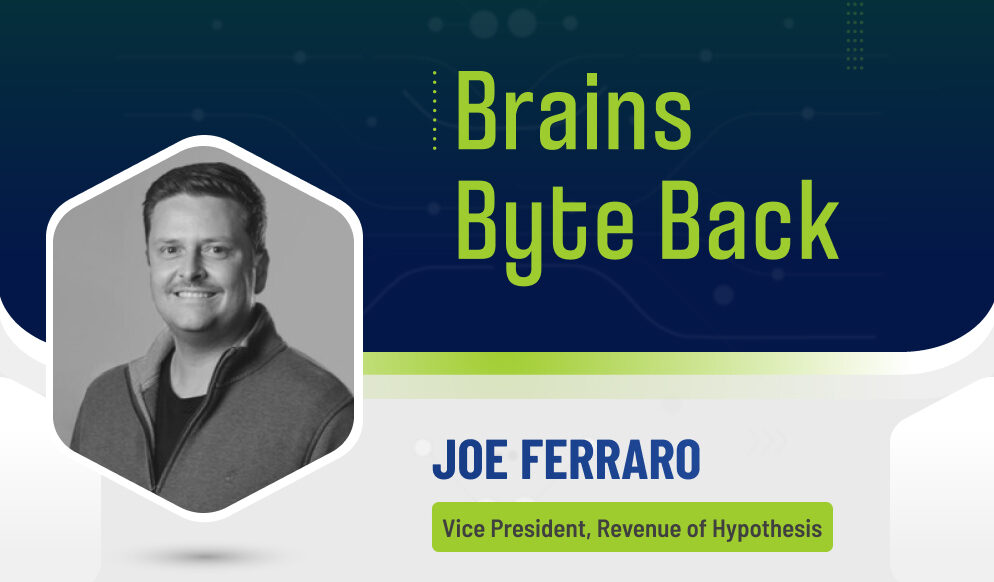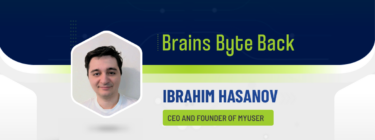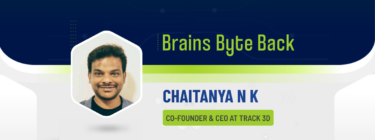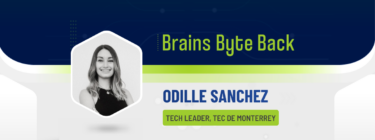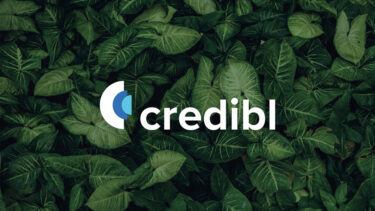In today’s episode of the Brains Byte Back podcast, we speak with Joe Ferraro, Vice President of Revenue at Hypothesis, a company striving to implement a conversation layer over the entire web that works everywhere, without needing implementation by any underlying site.
Ferraro kicks off the show by sharing how the goal of the company is to enable discussions and collaboration on various topics, similar to commenting in Google Docs but applicable to the entire web. He opens up about how this initially began as an idea in 2011 when the founder and CEO, Dan Whaley, identified a need to address misinformation on the web.
Ferraro shares how Whaley came up with the concept to facilitate conversations on source data, such as articles or research studies, to promote nuanced discussions and different perspectives. The project underwent several years of development and standardization efforts, leading to the launch of Hypothesis in 2019.
Additionally, Ferraro explains the origins of the name, advocating that it signifies the exploration of theories and the importance of bringing facts and conversations to the forefront. He also goes on to add that the site’s creative URL (hypothes.is) is both a domain hack and a nod to Iceland’s progressive approach to freedom of speech and information.
Following this, Ferraro shares how Hypothesis is making a difference in the education space. He states that Hypothesis initially gained traction in the education sector, with millions of university students using the tool for collaborative reading and discussions. He also argues that students have embraced the ability to collaborate beyond traditional discussion boards, and the aim is to help them transition seamlessly into the workplace.
And finally, Ferraro wraps up the show by sharing how the company has recently entered the enterprise space, where the goal is to enable more efficient collaboration within organizations and relieve the administrative burden of using multiple tools.
You can listen to the episode below, or on Spotify, Anchor, Apple Podcasts, Breaker, Google Podcasts, Stitcher, Overcast, Listen Notes, PodBean, and Radio Public.
Alternatively, you can find a transcript below:
Joe Ferraro: My name is Joe Ferraro. I am the Vice President of Revenue, so I oversee the commercial operations here at Anno. Our product is known as Hypothesis and we are a social annotation tool. So our goal is really to allow people to have conversations about anything on the Web directly where they find the source information. So the best layman’s way to explain it would be to imagine the commenting in Google Docs everywhere, on the Web, that you have conversations with your classmates, your peers, or even your friends on a variety of topics.
Samuel Brake Guia: I love this idea because I found commenting in those documents so helpful, especially for someone like myself who works as a digital nomad working with teams that spread out all across the world. So I already have noticed just how useful this can be so to have it all over the Web, sounds absolutely fascinating. I want to know when and how did hypothesis first start?
Joe Ferraro: Yeah, that’s a great question. And This is an old idea that Dan Whaley our founder and CEO has been trying to fix since probably about 2011. So he’s a tech pioneer, he launched, the first Travel booking website in the 90s, the first plane ticket, ever booked commercially over the Internet. Went through a server of Dan’s living room. So Dan’s always been trying to solve big problems.
Joe Ferraro: And the idea of Hypothesis comes from when I was involved with a climate tech startup in 2011. So there are a lot of conversations in the world about climate and climate change. And at that time it was really focused on the Copenhagen Accords and whether or not the US was going to adopt them and some other countries as well. And what Dan found was that there was a lot of misinformation on the Web. I think today, especially in the States, we probably call that fake news but he said if we could just have a conversation on the source data, whether an article in the New York Times or research study that you find in one of the various journals on the Web where people could actually, look at the facts, talk about them and have a nuanced conversation that may actually give people more of a view. That they could sort of see the other side, especially with some of these polarizing conversations as opposed to taking the article and putting it on Facebook and seeing your Uncle Bill’s reaction and your friend from college. And so, in 2011, he decided this was a problem he was gonna solve and this is actually something that people have been thinking about almost since the genesis of the Web even in Mosaic back in the 90s, there was initially an annotation functionality in the Mosaic browser. That sort of took a backseat to some other features. And so, Dan spent the first seven or eight years of the Hypothesis project actually running a nonprofit where the organization was trying to determine the best technical ways to approach this big idea, but also to develop a Web standard. So 2017 to 2018, the annotation was developed by the W3C as a new unit of speech. And in 2019, we incorporated as Annotation Unlimited or as we’re known Anno, and went to market with the Hypothesis product.
Samuel Brake Guia: That’s awesome. And it’s incredible to hear that there’s such a deep backstory spanning years and years of work and that’s fascinating to me. And I want to know what’s the story behind the name Hypothesis, and was it always the plan to have the website spelled like Hypothesis? But with the dot before the final I and S because I think that’s really cool.
Joe Ferraro: So, I mean, you think about the definition of hypothesis, you think about it, you’ve got a thesis and that’s the foundation upon which any argument rests. It’s namely that you’re looking to prove a theory and the first thing you do when you start writing or when you’re in science, what you want to look for when you’re reading is some kind of hypothesis or thesis that can sort of explain what you see in front of you. And that’s what the scientists do every day, that’s what researchers, do every day. And even in my own work, trying to determine, why is a certain thing happening if the set of hypothesis and either prove it right or wrong. And so that’s really what we set out to do is let people talk about things and bring the facts right to where the information rests
Joe Ferraro: In terms of the web domain, I think it’s actually two things. First, it’s really clever web hacking. Maybe it’s a domain hack. I mean .is is an Islandic exchange, but we also think that the Icelandic people are really good representatives of the type, but thinking that we’re trying to nurture. Back in 2010 Iceland part of it actually passed a forward-looking modern media initiative, which was 13 laws. That could be edited to talk about freedom of speech, expression and information. And as they did that, it actually allowed them. The people of Iceland to go through a process to crowdsource, a rewrite of their constitution. Obviously, that’s what we’re all about. So we approve. So from a marketing perspective, it looks really great. It’s easy to think of. And also really ties closer to the values that we have as a company.
Samuel Brake Guia: That’s awesome. That’s a fun little fact as well because I never would have known that, it has that behind it. And I would highly recommend that anyone listening goes to check out your website that we mentioned there because it really gives you a better sense of how this is going to work. And I did see on your website that you have a blog titled Preparing Students for the Workplace with Social Annotation. Now again, I would highly recommend listeners, go check it out but for now, would you be able to share some insights based on this blog and maybe from your own knowledge on how you believe Social Annotation can help prepare students for the workplace?
Joe Ferraro: Yeah, that’s a really great question, Sam. And I think, before I answer it, we should take a step back and talk about sort of who we serve right now. And so Hypothesis as we launched, it was the end of 2019, early 2020, and all of a sudden for some reason there was a massive need for new tools in education to help students collaborate and work together. That was really where we were born in education again. We have about two million university students that use our tool each year to collaborate on reading, really replacing the discussion board and having more in-depth nuanced conversations in the classroom. And the dream has always been to really unfold this technology across the Web. As students have started to graduate they’ve started to try and take this tool with them and we’re asking “How can I continue to take notes and have conversations on the source material that I need in front of me?” And that gave us a great opportunity to start moving into the enterprise space.
Joe Ferraro: But, especially over the last two, three years. There are students graduating college this year that spent the first two years of their undergraduate, Working remotely, and having to collaborate because they weren’t able to physically, go to campus. And so many knowledge workers today work remotely that having an understanding of how to collaborate over the web without having a physical conference room or being able to go ask your neighbor a question is a big challenge for these folks. Especially when you think of tech in general, I saw a study recently that the average tech company uses 78 different SAS applications across an organization and so that could be things like Slack, it could be email, it could be Salesforce. That could be your marketing software but none of these tools talk to each other and that’s a big difference for students. When they’re coming out of school, you work in your learning management system, your texts are located your assignments are located there, your collaborating peers, So it’s a big adjustment for students, especially when they get into the workplace and suddenly have to figure out Where do I put the information. So the right people are going to see it and How do I collaborate with all these different tools where I can have different options? And so our goal is to first, make sure students know how to continue to collaborate with each other while they’re at school, but help them integrate. The technologies that you’re going to use every day using our platform to help them connect those various identities and share the information that they want to.
Samuel Brake Guia: That’s awesome. Yeah, I mentioned it before, but I can definitely see this helping not just students, but the workplace and throughout the whole transition from early days in school, even to your later years, I think this is a sort of thing that can really carry through someone’s entire life, especially, as we move into this, digital space working remotely. I can see a great deal of opportunity here. And we spoke here about preparing students for the workplace. No doubt, there’s gonna be an important issue with this, but that aside, what else, excites you the most, when it comes to the potential of social annotation?
Joe Ferraro: I think the world is getting smaller every day. Even here a t Hypothesis, our team spreads across, I believe 15 different countries where we have to be Asynchronously but also being able to connect synchronously across a variety of documents time zones, and formats of information. And that’s what a lot of people are seeing in their day-to-day work right now. And so most students are really important part of what we do. I think the whole world is looking for ways to really streamline their communication, and make sure that they can share the data and the context that’s needed to get things done. So, I’m really excited about that.
Joe Ferraro: Secondly, it’s just AI. If you asked me, even at Christmas time last year, what I thought of artificial intelligence, I probably wouldn’t have had a very strong opinion on where that’s gonna go. But we’ve seen what chat GPT and Google’s barred and all these other language models have been able to bring out. Those will start a text, and that’s what our tools are all about our annotations and texts things that people are thinking about things that people are trying to synthesize understand, and explain, and it’s gotten us starting to think about contacting, how can we use the type of information that people share in the platform to help them make more? Well-founded hypotheses and solve the big problems that are in front of them outside of that? It’s more than just AI in text. I think that it’s really starting to move to a place where Social Annotation you can really have no balance this fall. We’re launching video annotations so essentially transcribing and time coding any video that a student or organization wants to take a look at and giving people the opportunity to have a conversation over recorded material as well as image annotation. So if you’re taking an art history class in education, looking at a work by Michelangelo, it actually being able to talk about it, like you would in a museum. If you were there with your peers, it really opened up the Web to so many more opportunities for conversation. And so many more opportunities for understanding collaboration and learning, I think this is really just the beginning of almost fundamentally transforming the way that we use the Web. Between AI and different communication tools.
Samuel Brake Guia: Yeah, it’s so interesting. There you mentioned AI, I find it creeping into the conversations I have on these calls more and more, especially Chat GPT as well. So I’m super interested to see how AI is gonna interact with this and how they’re gonna work together hand in hand. And you already mentioned a few things on how you see this developing but I want to know, for Hypothesis. What’s next for you folks?
Joe Ferraro: There’s a lot coming down the pike Sam. First is just our continued commitment to the education space, our preparing to launch, probably our biggest fall in the history of the organization over 400 colleges and universities will be adopting this as part of their curriculum in August or September. And so making sure that we can continue to support the users that we have as well as get the next generation of college students, excited about social annotation and collaboration. On top of that, we have launched into the enterprise space and just the last 50 days or so. Yeah, we were launched on Team23, the large Atlassian user conference in Las Vegas. We’re actually the first external vendor to ever get mentioned at the keynote as a new feature in their platform. And so they’ve got about 500 million users around the world that are looking for different ways to collaborate and are just clamoring for ways to streamline that process. If your marketing team reviewing a competitor’s website rather than taking screenshots and emailing it to the team. They can actually highlight the text on a competitor site and tag their co-workers and pull a screenshot directly into confluence to understand what competitors doing for researchers and coders to me. Imagine being able to talk over a line of code without making edits and understand exactly what needs to be accomplished with the code writing. I think for us, this is a really big year as we come outside of education. But also helping the enterprise market, really get almost more of a sense of how their employees are collaborating and working and enabling them to do it more efficiently so that they can focus on what’s important and not worry so much about the administrative burden of using so many different tools.
Samuel Brake Guia: That’s great. I mean I can see this streamlining so much and I can’t wait to see what comes from this. And as I mentioned before, I recommend everyone go and check out your website, but if people do want to keep up to date with the work that you’re doing, maybe either yourself Joe, or Hypothesis in general, where should people go?
Joe Ferraro: So the best place to go is obviously to our website and so it’s Hypothes.is, the dot before is I S so a one word, easy enough to find us there. On our social media, we always share a lot of our customer success stories, and also feel free to follow me on LinkedIn to understand what’s coming next and what we’re excited about, and just, our view of Tech in the enterprise space as a whole.



